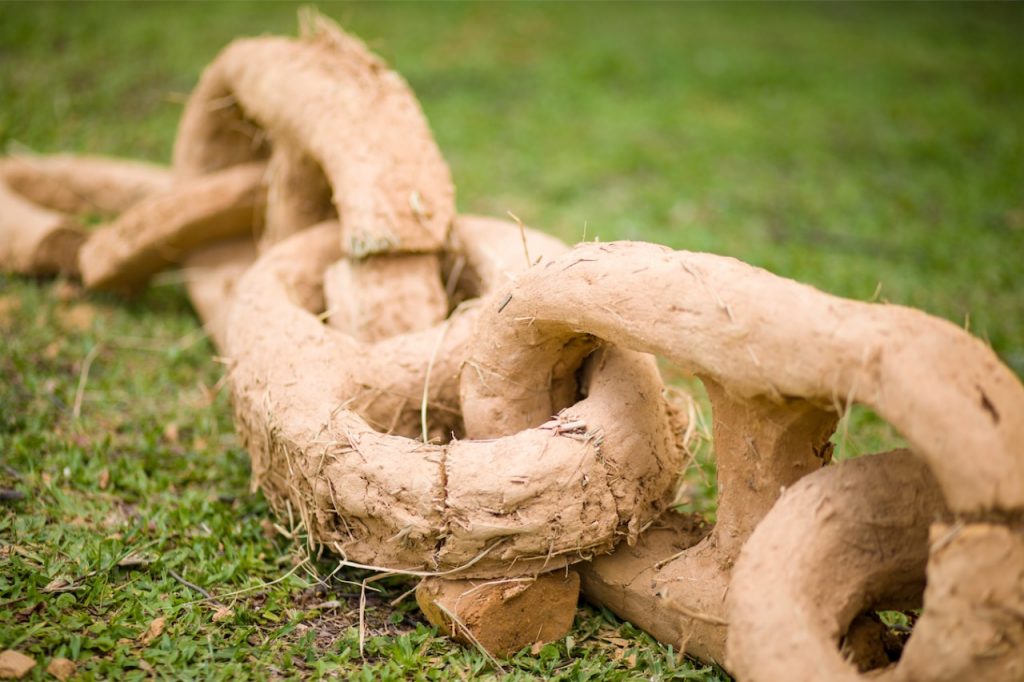MAM SÃO PAULO LAUCHES WORK BY FREDERICO FILIPPI IN ITS SCULPTURE GARDEN
The ephemeral work entitled Cobra Grande will have the shape of a deforestation chain, a tool used in forest clearing in the Amazon territory, and will go around the Garden in front of the museums

From December 10th, the Museum of Modern Art of São Paulo – MAM São Paulo – will present a new work in its Sculpture Garden, located in Ibirapuera Park. Signed by artist Frederico Filippi, the site specific Cobra Grande (2022) will be a temporary work, ephemeral in nature, given its composition, which makes it subject to everyday conditions. The initiative is part of the celebrations for the 30th anniversary of the MAM Sculpture Garden, to be completed in 2023.
Born in São Carlos, in the interior of São Paulo, Filippi now lives and works in the capital of São Paulo, and in the last six years he has delved into issues of the boundary between the forest and the advancement of industry. Cobra Grande is a work that forms part of a series he has been developing on deforestation devices. “My artistic research began with
the friction between matrices of different civilizations since the invasion of America and over time I became interested in this place that is in the middle of this continent, and which is a place of dispute, which produces a lot of greed”, he comments.
Since 2016, the artist has been working on community building projects in the Amazon region and in southeastern Brazil. This proximity to the territory led his research towards studies on this “deforestation boundary”, as he calls it. In previous works developed from that same place, Frederico brought reflections on the tools used in the deforestation process, such as machetes, chainsaw and machinery parts. The work in the MAM Sculpture Garden will have the shape of a large chain, a device used as an ostensive deforestation technique in the woods. Cobra Grande will be a life-size replica of this chain that connects to two tractors at its ends, quickly and abruptly pulling down the vegetation.
The large chain will be made of adobe, a material widely used in bioconstruction – a traditional clay construction technique such as pau-a-pique, for example – and will be placed in an arch among the trees outside the museum.

Composed of clay and plant fibers, adobe is a material with low environmental impact. Each of the chain’s 180 links will be molded from this mixture. The pieces, however, will not go through the usual burning process, they will just dry in sunlight, getting an imagetic appearance very similar to oxidized iron. Because it is not burned, the material must fall apart due to weathering.
The artist points out that “the opposition of natural and industrial elements (snake/chain, clay/steel) constitutes the concept of threat and later deposition”. According to Frederico, therefore, there is a contrast that is also revealed in the viewer’s perception of the work, which at the first sight may appear to be made of a material (oxidized iron) and when looked carefully it shows something else (adobe). “These discrepancies on materials are very important for the work”, says the artist.
“The work by Frederico Filippi, using clay, matter taken from the earth and which will return to it, allows us to reflect on the perverse techniques of deforestation currently practiced. In the critical moment in which planet Earth finds itself, in the perspective of the environmental crisis , the work contributes to drawing attention to an urgent issue that is fundamental for the maintenance of biodiversity and life in general”, reflects Cauê Alves, chief curator of MAM São Paulo.